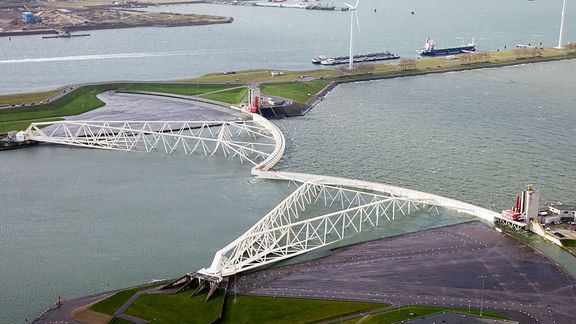Port Authority and municipality united on responding to sea level rise in the port
The Port of Rotterdam Authority and the Municipality of Rotterdam have reached agreements on how to sustain flood risk management in the port and industrial area in light of the rise in sea level during the course of this century. These agreements stem partly from the Port Authority and the municipality’s involvement in the Rijnmond-Drechtsteden Delta Programme. The port area falls within the boundaries of the Municipality of Rotterdam, and the Port Authority (owned by both the state and the municipality) is responsible for its development and management.

The Port Authority aims to counter the effects of climate change while ensuring that the port area continues to make a significant contribution to prosperity and employment in the Netherlands.
The area outside the flood defence system is the largest of its kind in the country. In areas outside the flood defence system, residents, businesses and users are themselves responsible for introducing measures to limit the effects caused by any flooding. Over the coming period, the Port Authority will be contacting the business community concerned to provide it with information and draw up agreements on measures designed to remain a flood-resistant port far into the future.
Port high above sea level
The port areas are currently safe from high water levels. They were constructed three to six metres above sea level and are partially protected by storm surge barriers. In order to remain a flood-resistant port and maintain a healthy business climate, now and in the long term, the Port Authority has launched the ‘flood management adaptation strategy’ programme. The Port Authority is working on this in partnership with the Municipality of Rotterdam, other governmental organisations, (utility) companies and Deltalinqs. One of the goals is to raise awareness among businesses about the potential risks that climate change entails. The reports describe changes and measures (adaptation strategy) that will be introduced in various port areas - such as Europoort and Botlek - aimed at preventing or limiting the consequences of a flooding event, and ensure continued protection of the area into the future. The integrated strategy for the entire port and industrial area will be completed later this year.
Over the coming decades, the effects of climate change, and in particular the sea level rise, mean the risk of flooding will rise in the Port of Rotterdam and its surrounding areas. Current climate change scenarios predict a sea level rise of between 35 and 110 cm from 1990 until after 2100. The great economic significance and the presence of vital and vulnerable functions in parts of the port area mean that a timely response to the consequences of this is desirable.
It will allow the port to anticipate the rise in sea level and incorporate it into further development. Consequently, the port will be able to make responsible investments to maintain its flood-resistant status.